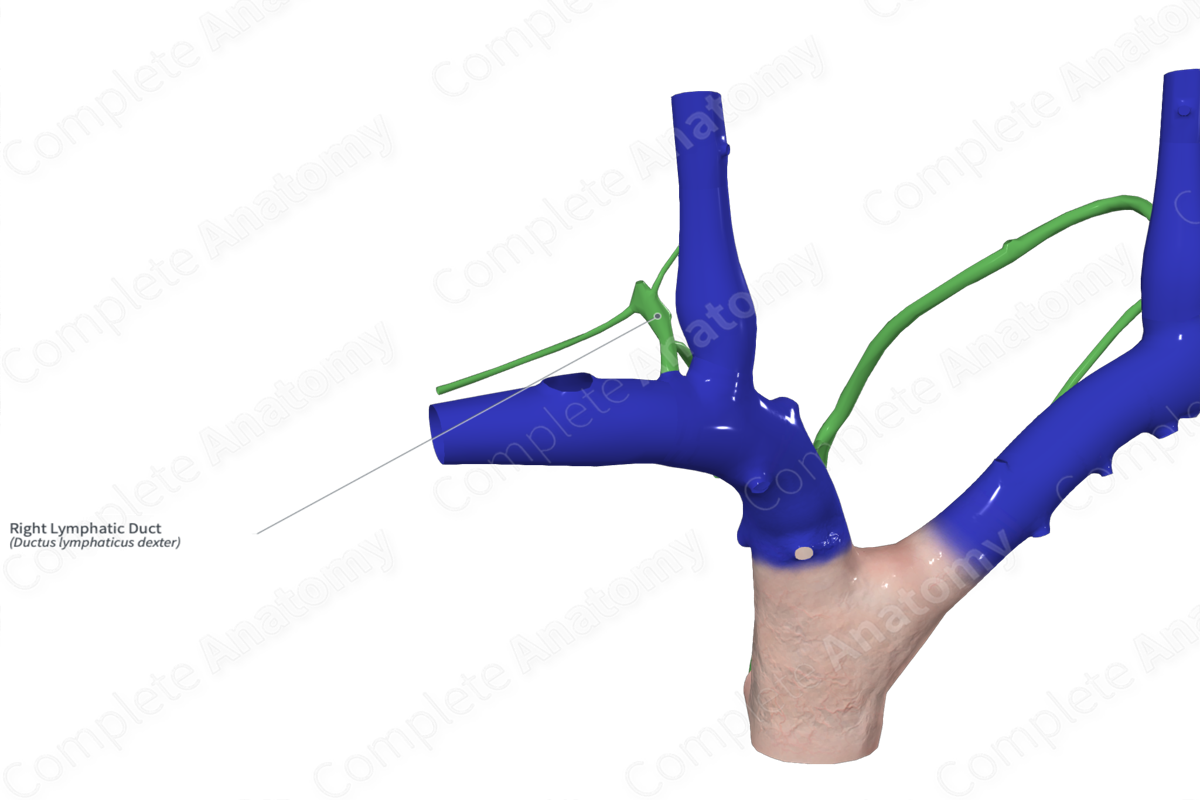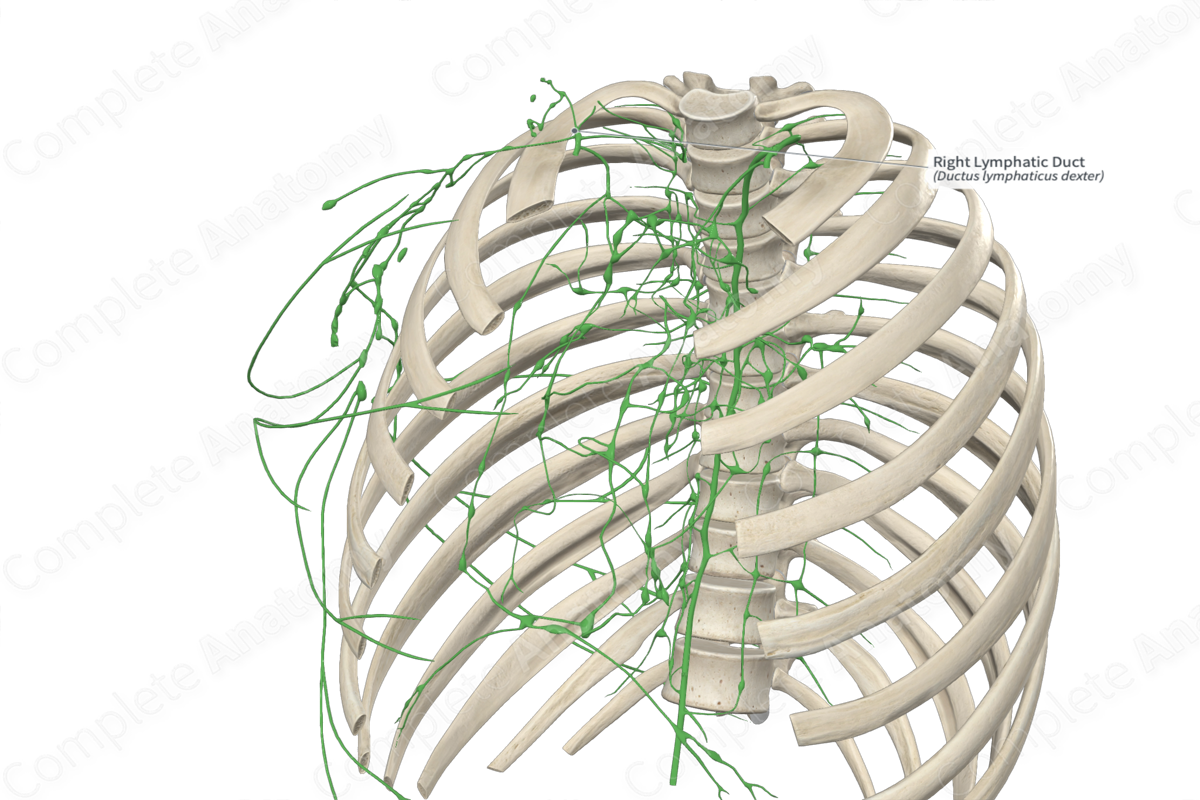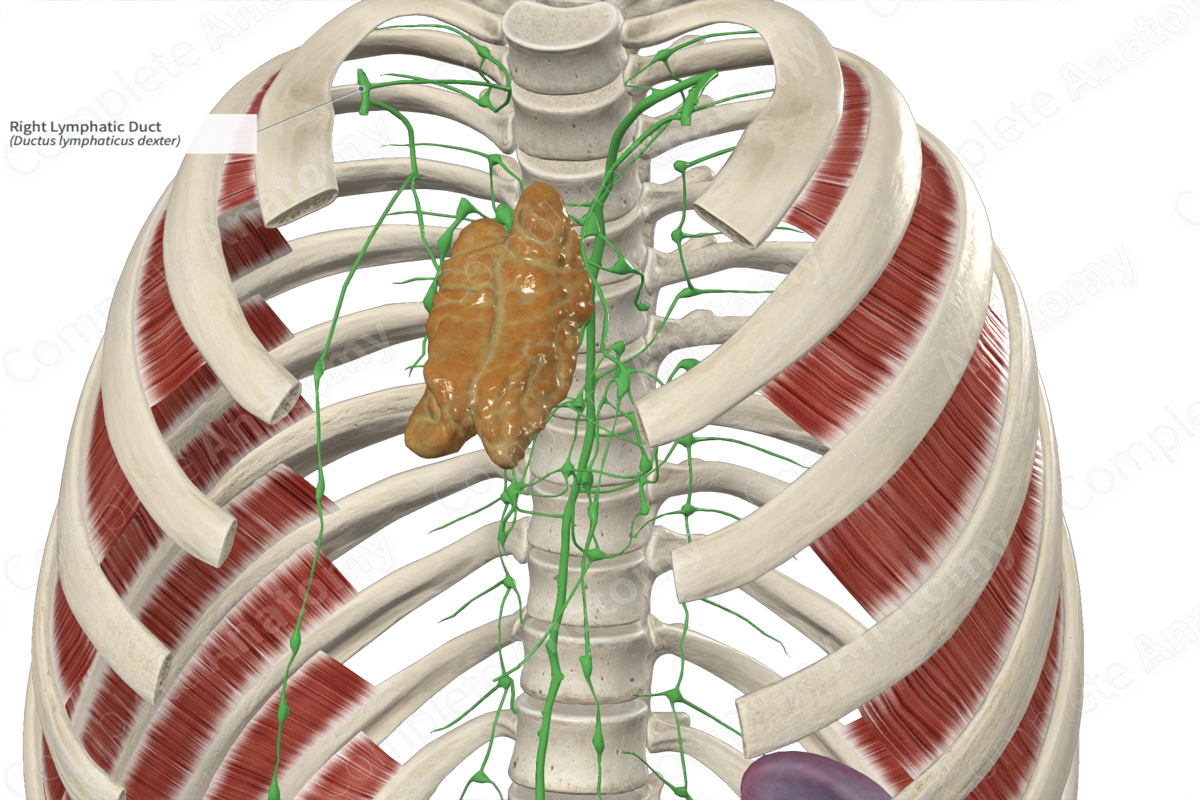
Quick Facts
Location: Neck.
Drainage: Right side of head, neck, and thorax and right upper limb.
Direction of Flow: Right brachiocephalic vein.
Related parts of the anatomy
Description: (Location & Drainage)
The right lymphatic duct is much less distinguishable than its left counterpart, the thoracic duct. The right lymphatic duct is about 1–2 cm in length and is located in the neck, anterior to the scalenus anterior muscle. It is formed by the union of the right bronchomediastinal, jugular, and subclavian trunks and delivers lymph back to the venous system via the right brachiocephalic vein, at the junction between the internal jugular and subclavian veins.
The right lymphatic trunk is a highly variable structure, where it may not receive one of the trunks named above. Additionally, it is normal for the right lymphatic trunk not to form at all, and the terminals of the right bronchomediastinal, jugular, and subclavian trunks end directly in the venous system (Földi et al., 2012; Tubbs, Shoja and Loukas, 2016).
References
Földi, M., Földi, E., Strößenreuther, R. and Kubik, S. (2012) Földi's Textbook of Lymphology: for Physicians and Lymphedema Therapists. Elsevier Health Sciences.
Tubbs, R. S., Shoja, M. M. and Loukas, M. (2016) Bergman's Comprehensive Encyclopedia of Human Anatomic Variation. Wiley.
Learn more about this topic from other Elsevier products
Right Lymphatic Duct

The right lymphatic duct is formed from the confluence of the right bronchomediastinal, right subclavian, and right jugular lymphatic trunks.




